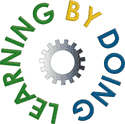What do candidates on the Stepper and Servo Training course actually do?
We begin by analysing the range of motion control methods commonly used in industry - positional control, speed control and torque control. The various applications of these control methodologies are discussed, by describing the common requirements of packing machines, robots, palletizers etc. We look at how servosystems work, their maintenance issues and what typically goes wrong with them. We look at the particular problems of regeneration, causes of servomotor bearing failure, the effects of mechanical shocks on servomotors etc.
The following are some extracts from the course notes, showing how trapezoidal characteristics are designed into servomotors, how brushless motor drives work and how stepper motors work.
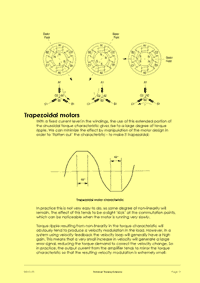 |
 |
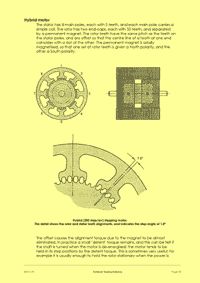 |
Page 11 of the course notes for the Stepper and Servo Training course, showing how trapezoidal characteristics are designed into servomotors |
Page 17 of the course notes for the Stepper and Servo Training course, showing how brushless motor drives work |
Page 33 of the course notes for the Stepper and Servo Training course, showing how stepper motors work |
The candidates practice configuring and tuning an industrial servodrive using PC-based software, programming it to respond to signals from a remote control unit, which simulates HMI or control panel inputs to the drive. Candidates then practice making the servomotor start, stop, ramp up and down and run at various speeds.
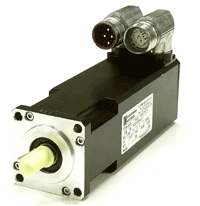 |
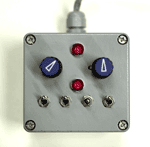 |
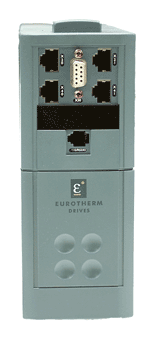 |
Candidates on the steppers and servo training course use an ac brushless servomotor to explore the operation of industrial servos |
We use a remote control unit to control the servodrive on the steppers and servo training course |
Candidates on the steppers and servo training course use an industrial servodrive to investigate the various motion control parameters that can be changed and also configure the drive's responses to inputs from the remote control unit |
We then look at the range of stepper motors commonly used in industry, looking at how they work and where and why they would be used in preference to servomotors (cost factors, reliability issues etc). The various applications of stepper motors are discussed (print registration, etc). We look at how stepper drives work, the complex electrical connections required, their maintenance issues and what typically goes wrong with them. We discuss the particular issues of slewing, resonance and other problems.
The candidates use a specially designed stepper drive unit (allowing them to explore the uses of unipolar, bipolar and microstepping drive types) which can run at extremely low speeds so that they can actually see the drive signals sent to the stepper motors in the various different modes of operation (half-step, microstepping, wav etc). This aids in their understanding of stepper motors and the associated drive units.
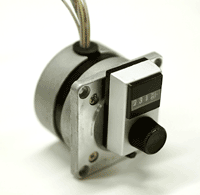 |
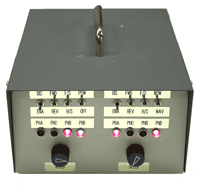 |
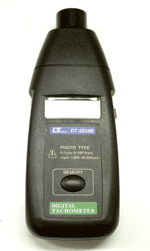 |
Candidates on the steppers and servo training course use an industrial hybrid stepper motor to explore the operation of industrial stepper motors |
We use a specially-designed stepper drive unit with unipolar, bipolar and microstepping outputs, capable of running at very low speeds so that candidates on the steppers and servo training course can see the signals produced by the drive in half-stop, microstepping and wav drive modes |
Candidates on the steppers and servo training course use an optical tacho to measure the speed of the various motors used on the course |
If you would like to see some of the equipment used on the Steppers and Servo training course for yourself, then please call us to arrange a visit to our offices in Kent. Alternatively, we can visit you anywhere in the British Isles.
